Dear Readers,
Almost a year ago, I said we should be afraid – and prepared – for war.
A few of my readers said that I was a fear monger; that I was using scare tactics to influence my readers.
But here we are almost a year later and war is exactly what is happening.
While citizens on this side of the world are cheering for a recovery fueled by cheap credit (that eventually has to be paid back with higher interest rates), much of the world is in chaos.
Emerging markets are now feeling the pain of inflation, while developed countries reap the temporary rewards of the printing press.
This is what I wrote last year on September 23, 2012:
I am about to share with you a timeline of events that will not only shock you, but also give you a whole new perspective of the world’s financial system.
For years I have been writing about our economic decay and the growing financial war. The threats I mention are real. The facts are real. And the dangers are real.
Triggers are waiting to be pulled. You’re seeing it all over the news:
Coordinated attacks against Western embassies in the Middle East.
The assassination of a U.S. Ambassador at the hands of an anti-American terrorist in the Libyan US Embassy.
Iran and Iraq on the brink of war, with cruisers, aircraft carriers and minesweepers from 25 nations converging on the Strait of Hormuz in defense.
Iran makes a serious threat of World War Three
You’re seeing this all over the news, but can you connect the dots?
Connecting the Dots
The United States has just announced an open-ended QE3; printing billions of dollars every month as they see fit. This reckless money creation, a weapon by the US to balance trade deficits, is causing havoc worldwide.
(If you missed the last few issues (from 2012) of the Equedia Letter, GO HERE to catch up – it is very important you understand what’s at stake.)
Countries around the world are feeling the effects of this currency war. It’s created higher food prices in Egypt and stock bubbles in Brazil. Printing by the Fed leads to higher unemployment in developing economies as their exports become more expensive to Americans. While higher food prices means a lower standard of living for first world nations, it’s a matter of survival (see America’s Gold Wiped Out.) for smaller developing nations.
As a result of the currency war and the reckless abandonment of sound fiscal policy by the United States, countries around the world are beginning to leave the dollar in droves. The capital markets are now hanging sitting on the edge of a major fiscal cliff.
Imagine what would happen to our markets if the Russians decided to launch a resources assault (they control the world’s biggest gas company, producing 17% of the world’s gas), the Chinese retaliates and launches a currency assault, and Iran triggers World War III.
Can our capital markets withstand a culmination of these events?
The threats are extremely real. I urge you to read everything below and judge for yourself. Open your eyes.
A Shocking Timeline of Events
January 1, 2006: Russia cuts off all gas supplies passing through Ukrainian territory
October 28, 2008: RIA Novosti reports Russian Prime Minister Vladimir Putin proposed that Russia and China should gradually switch over to national currency payments in bilateral trade.
November 15, 2008: Reuters reports that Iran has converted financial reserves into gold to avoid future problems.
November 19, 2008: Guangzhou Daily reported that China’s central bank is considering raising its gold reserve by 4,000 metric tons from 600 tons to diversify risks brought by the country’s huge foreign exchange reserves of dollars.
March 23, 2009: People’s Bank of China reported that Zhou Xiaochuan, Governor of the People’s Bank of China calls for the establishment of a new international reserve currency to replace the dollar.
March 30, 2009: Agence France Presse (AFP) reports that Russia and China are coordinating proposals on a new global currency that could replace the US dollar as a reserve currency to prevent a repeat of the global economic crisis
March 31, 2009: The Financial Times (FT) reports that China, which is pushing to end the dominance of the dollar as a worldwide reserve, has agreed a currency swap with Argentina that will allow it to receive renminbi instead of dollars for its exports to the Latin American country.
April 26, 2009: AFP reports that China is calling for the reform of the world monetary system.
June 16, 2009: Reuters reports that the BRIC nations of Brazil, Russia, India and China called for reform of international financial institutions, sweeping changes to the United Nations to give a bigger role to Brazil and India and a “stable and predictable” currency system.
November 3, 2009: Bloomberg reports that India has purchased $6.7 billion worth of IMF gold to diversify out of the dollar, as ballooning U.S. debt and low interest rates weaken the currency.
June 29, 2010: Reuters reports that a new United Nations report released calls for abandoning the U.S. dollar as the main global reserve currency, saying it has been unable to safeguard value.
November 7, 2010: World Bank president Robert Zoellick says that the G20 should consider a new financial system that considers employing gold as an international reference point of market expectations about inflation, deflation and future currency values.
November 24, 2010: China Business Daily reports that China and Russia have decided to renounce the US dollar and resort to using their own currencies for bilateral trade.
December 15, 2010: Bloomberg reports that both China and Russia have called for the dollar’s role in global trade to be diminished since the global financial crisis, and Russia is promoting the ruble as a reserve and trading currency within the former Soviet Union. Moscow’s Micex exchange started trading the yuan against the ruble for the first time today, as Russia and China seek to reduce the use of dollars in trade.
May 4, 2011: Financial Times reports that Mexico has quietly purchased nearly 100 tonnes of gold bullion, as central banks embark on their biggest bullion buying spree in 40 years.
July 24, 2011: Financial Times reports that Iran and China are discussing using a barter system to exchange Iranian oil for Chinese goods and services, as U.S. sanctions have blocked China from paying at least $20 billion for oil.
August 1, 2011: Reuters reports that South Korea’s central bank bought 25 tonnes of gold over the past two months in its first purchase in more than a decade, saying the time was ripe to boost its gold holding.
August 17, 2011: Venezuelan President Hugo Chavez said that he plans to nationalize the gold sector. He’s also ordered the repatriation of 90 percent of Venezuela’s gold reserves held abroad, returning the country’s gold reserves back to Caracas.
December 26, 2011: The Japanese government reports that Japan and China will promote direct trading of the yen and yuan without using dollars and will encourage the development of a market for companies involved in the exchanges.
December 28, 2011: India and Japan sign new $15bn currency swap agreement
January 7, 2012: Iran and Russia replaces the U.S. dollar with their national currencies in bilateral trade.
January 17, 2012: Reuters reports that the People’s Bank of China said China and the United Arab Emirates have signed a currency swap agreement.
February 21, 2012: Bloomberg reports that the Turkish central bank said China and Turkey have signed a three-year currency swap agreement
March 22, 2012: BBC reports that China and Australia have signed a currency swap agreement in a bid to promote bilateral trade and investment.
March 30, 2012: Bloomberg reports that Iran and its leading oil buyers, China and India, are finding ways to skirt U.S. and European Union financial sanctions on the Islamic republic by agreeing to trade oil for local currencies and goods including wheat, soybean meal and consumer products. Iran also has sought to trade oil for wheat from Pakistan and Russia, according to media reports from the two countries.
June 1, 2012: Asia Times reports that Japan and China have started direct trading of their currencies, the yen and the yuan, on the inter-bank foreign exchange markets in Tokyo and Shanghai in an apparent bid to strengthen bilateral trade and investment between the world’s second- and third-largest economies. It is the first time that China has allowed a major currency other than the dollar to directly trade with the yuan.
June 7, 2012: Reuters reports that Kazakhstan’s central bank will increase the share of gold in its foreign exchange reserves.
June 22, 2012: Financial Times reports that Brazil has provided a vote of confidence in China’s efforts to promote the renminbi as a reserve currency by becoming the biggest economy yet to agree a swap deal with Beijing.
June 26, 2012: Xinhua reports that Chinese Premier Wen Jiabao and Chilean President Sebastian Pinera announced the establishment of China-Chile strategic partnership and the completion of negotiations on investment-related supplementary deals to a bilateral free trade agreement. Wen suggested that the two sides launch currency swaps and expand settlement in China’s renminbi. Wen then states that China is also ready to discuss and sign currency swap agreements with more ECLAC countries (Economic Commission for Latin America and the Caribbean).
August 1, 2012: Bloomberg reports that The Bank of Korea, which has the world’s seventh-biggest foreign-exchange reserves, boosted gold holdings for the third time since June last year, joining central banks from Russia to Kazakhstan in buying bullion to diversify assets.
September 4, 2012: The European Commission launches an anti-trust case against Gazprom, opening the formal legal probe based on “concerns that Gazprom may be abusing its dominant market position in upstream gas supply markets.”
September 21, 2012: Reuters reports that Brazil threatened a further clampdown on speculative foreign capital, firing a warning shot in a “currency war” its finance minister blamed on money-printing by Western central banks. Finance Minister Guido Mantega said Brazil would not allow its currency, the real, to strengthen as a result of aggressive monetary stimulus by the United States and other developed nations.
September 23, 2012: Tehran’s military officials continue to threaten Israel with annihilation should it strike nuclear facilities; Senior commander of Islamic Revolutionary Guard Corps says Iran will not start war, but “warn that US involvement in conflict will trigger WW3.”
The threats and events mentioned above are not simply extreme worst-case scenarios, but a maelstrom of events happening all over the world. I give you strong examples that China, Russia, Brazil, and other nations are seeking alternatives to the dollar as a world reserve currency.
As I mentioned in America’s Gold Wiped Out, a “currency war” is a fight between countries to achieve a lower exchange rate for their own currency. In other words, its competitive devaluation. In short, the cheaper your currency, the more money you attract from foreign entities; this leads to increased exports, growth, and job creation. But never has printing during a global slowdown resulted in any growth or job creation.
I go onto say:
“I know a lot of really smart guys telling everyone to stay out of the markets – they have been for the last year. Yet, the market continues to climb. My prediction remains: The markets will continue to climb, even if it’s with volatility. I said it earlier this year in, “A Shocking 2011 Cover-Up.“
…WE’RE ALSO LESS THAN 2 MONTHS AWAY FROM THE US ELECTIONS. I HAVE A STRONG FEELING OBAMA WILL STAY IN POWER; IF THE MARKET CONTINUES TO RISE FOR THE NEXT FEW MONTHS LEADING UP TO THE ELECTION, HE WILL.”
It’s now a year later and the market has continued to climb since that letter and Obama is still president.
I am not revisiting that letter to tell you that my predictions came true; I am revisiting it for one very specific reason: The threat of war.
The War the Government Doesn’t Want Exposed
Take a look at the underlined bullet points above and you will see an astoundingly shocking chain of intertwined events all related to currency and energy.
Currency manipulation allows developed countries to print and lend to other developing countries at will.
A rich nation might go into a developing nation and lend them millions of dollars to build bridges, schools, housing, and expand their military efforts. The rich nation convinces the developing nation that by borrowing money, their nation will grow and prosper.
However, these deals are often negotiated at a very specific and hefty cost; the lending nation might demand resources or military and political access. Of course, developing nations often take the loans, but never really have the chance to pay it back.
When the developing nations realize they can’t pay back the loans, they’re at the mercy of the lending nations.
The trick here is that the lending nations can print as much money as they want, and in turn, control the resources of developing nations. In other words, the loans come at a hefty cost to the borrower, but at no cost to the lender.
That is why energy is much more valuable than currency in a fiat system. That’s why many wars have been fought over the control of energy.
The current conflict in Syria is no different.
Let me rephrase that so I don’t get into trouble: Yes, there is a serious civil conflict in Syria that is not about energy.
But Russian and American involvement in Syria is…
The Syrian Conflict
Russia, as you can see in the above timeline of underlined points, has been strategically positioning itself with energy rich nations – making allies by supplying arms and infusing cash to nations who can’t refuse.
For example, Bangladesh.
Via my uranium report:
“EARLIER THIS YEAR, RUSSIA SIGNED THE LONG AWAITED NUCLEAR POWER AGREEMENT, FINANCING $500M FOR THE SUPPLY OF TWO 1000 MEGAWATT REACTORS WITH BANGLADESH.
THE DEAL WAS IMMEDIATELY FOLLOWED DAYS LATER BY A MAJOR ARMS PURCHASE AGREEMENT WORTH A BILLION DOLLARS FOR THE DELIVERY OF ARMORED VEHICLES AND INFANTRY WEAPONS, AIR DEFENSE SYSTEMS AND MI-17 TRANSPORT HELICOPTERS.”
Russia is already the dominant energy powerhouse in Europe, supplying and controlling nearly 40% of total gas imports to Europe.
Russia’s energy dominance in the Eastern Hemisphere has allowed the nation to amass fortunes; fortunes used to continue its energy dominance through resource acquisitions and the buying of support from resource-rich allies.
Russia wants this dominance to continue.
That’s why it needs to maintain control over Syria.
Syria: The Perfect Target
Syria is bordered by Turkey to its north, Lebanon to the west, Israel to the southwest, Jordan to the south, and Iraq to the east.
Syria’s location puts it smack in the middle of Qatar and Turkey; a perfect crossroads for a natural gas pipeline that could make Qatar, the world’s largest exporter of liquid natural gas (LNG), a strong supplier of gas to Europe.
A gas pipeline from Qatar to Turkey means will Russia lose its dominance and control over energy supplied to Europe; thus Russia will lose lots of money and power.
Of course, Qatar interests want to supply Europe with gas because it will make them a lot of money.
That’s where the Nabucco-West pipeline comes in…
The Nabucco-West pipeline is a proposed natural gas pipeline from the Turkish-Bulgarian border to Austria. It is a modification of the original Nabucco Pipeline project, which was to run from Erzurum in Turkey to Baumgarten an der March in Austria.
The aim of the Nabucco pipeline is to diversify the natural gas suppliers and delivery routes for Europe; thus reducing European dependence on Russian energy.
The original project was backed by several European Union member states and by none other than the United States.
However, Nabucco’s future is far from assured, because its proponents have yet to reach agreements with gas suppliers. While there are other options, the most logical and economic solution would be a pipeline from the Middle East to Turkey, with gas supplied by Qatar.
And herein lies the conundrum…
In order for Qatar gas to reach Turkey, it has two options*:
One option would lead a pipeline from Qatar through Saudi Arabia, Kuwait and Iraq to Turkey.
The other would go through Saudi Arabia, Jordan, Syria and then to Turkey.
Saudi Arabia already said no to the first route because it wants to ensure that it gets a piece of the action and maintain control over the gas that goes through its region.
Of course, that means less profits and control for Qatar.
So that means option one won’t happen. Onto Syria.
*If you look at the map, you may be wondering why Qatar can’t go through Iran (not to be confused with Iraq). That’s because Iran and Qatar share the South Pars / North Dome field – the world’s largest gas field. In other words, Iran doesn’t need Qatar. As a matter of fact, if the proposed Iran-Iraq-Syria pipeline goes through, it would deal a major blow to Qatar.
Furthermore, it would deal a major blow to America, whose Washington’s strategy in south-west Asia since the Clinton administration has been to bypass, isolate and hurt Iran by all means necessary.
Syria: The Russian Ally
Syria’s President Bashar Hafez al-Assad has long been Russian President Vladimir Putin’s ally.
At the recent G20 summit this week, the media was shocked to hear Putin’s direct remarks regarding helping the Assad regime in Syria:
“WILL WE HELP SYRIA? YES, WE WILL. WE’RE DOING IT RIGHT NOW, WE’RE SUPPLYING ARMS.” – VLADIMIR PUTIN
Why everyone was so shocked to hear that is beyond me.
Russia has been helping Syria by supplying arms, fighter jets, tank parts, advanced anti-ship cruise missiles, long-range air defense missiles, military officers as advisers, diplomatic cover, and a boat load of cash, since the Syrian conflict began more than 2 years ago.
It’s no wonder why Assad said no to the second route; he’s obligated to help block the flow of natural gas out of the Persian Gulf into Europe to ensure that Russia remains in control of European energy.
It’s no wonder why Qatar has spent more than $3 billion supporting the rebels in dethroning Assad.
If Assad is forced out, Qatar could put in place a puppet regime in Syria that will allow them to build a pipeline into Europe and give Qatar the ability to sell natural gas to Europe, undermining Russia.
Of course, the Saudis have also been helping the rebels because it too wants to control the flow of energy from the Persian Gulf to Europe.
There are even rumours that Saudi Arabia and Qatar may be ‘bribing’ US congressmen to approve war on Syria in order to dethrone Assad.
Via Presstv:
“AMERICAN HISTORIAN WEBSTER GRIFFIN TARPLEY SAYS THAT SAUDI ARABIA AND QATAR ARE OFFERING BRIBES TO THE US CONGRESSMEN FOR A MILITARY STRIKE AGAINST SYRIA.
“THE SAUDIS AND THE QATARIS ARE REPORTED TO BE DEPLOYING HUGE AMOUNTS OF MONEY FOR BRIBERY, BRIBERY TO THE FAMILIES AND POLITICAL AND BUSINESS INTERESTS OF THESE MEMBERS OF CONGRESS,” TARPLEY SAID IN AN INTERVIEW WITH PRESS TV ON FRIDAY.
“HILLARY CLINTON HAS RECEIVED 500,000 DOLLARS IN JEWELRY FROM THE KING OF SAUDI ARABIA AND HILLARY CLINTON JUST CAME OUT FOR WAR,” HE ADDED.”
If Qatar or Saudi Arabia gains control of Syria, it would be a major blow to Russia.
American Involvement
The U.S. wants to supply Europe with gas; this was made clear when it backed the Nabucco-West pipeline.
America reaffirmed its natural gas stance last year with Exxon and Qatar proposing a $10 billion U.S. energy export project.
The U.S. has the world’s largest supply of natural gas and it has boldly made plans to profit from supplying gas to Europe.
Combine that with the fact that Washington and Iran are direct enemies, and you can see why it is in America’s best interest to dethrone Assad.
Dethroning Assad will kill two birds with one stone; it will bypass Iran and loosen the control Russian energy has over Europe.
All of this means that the U.S. and its energy allies, Qatar and Saudi Arabia, will do whatever they can to remove Assad and implement their pipeline wishes.
Russia, on the other hand, wants Assad to stay in power so that a new pipeline from the Middle East to Turkey will not undermine Russia’s profits.
To read more details on this, a great article was published in the Guardian this week. Also, to get a better scope of the whole pipeline war, Aljazeera published a great article last year. You can find it by clicking here.
I suggest reading both articles thoroughly.
Do you think the war in Syria is about Energy?
Share your thoughts below.
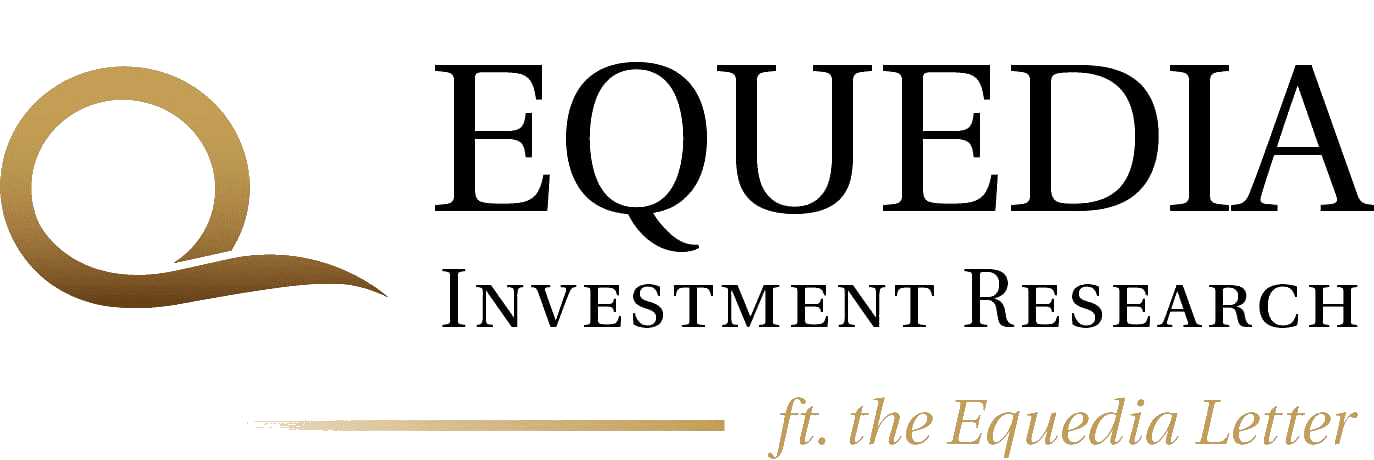
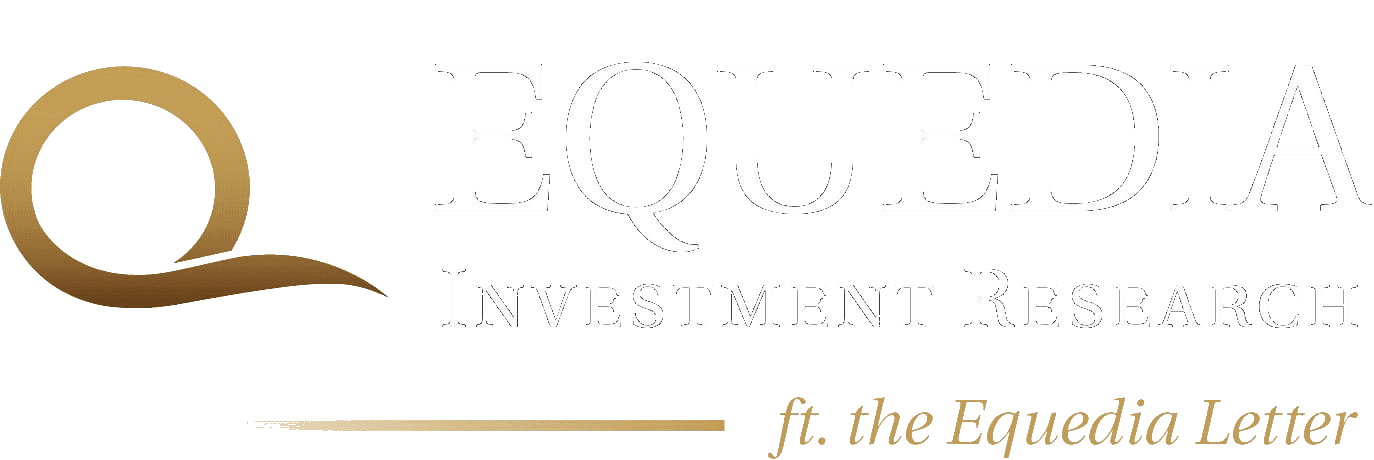
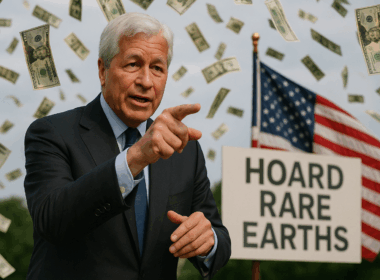
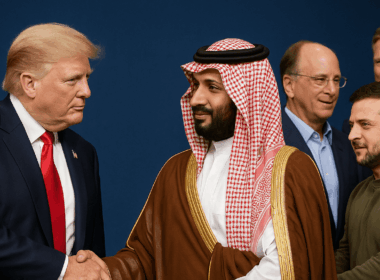


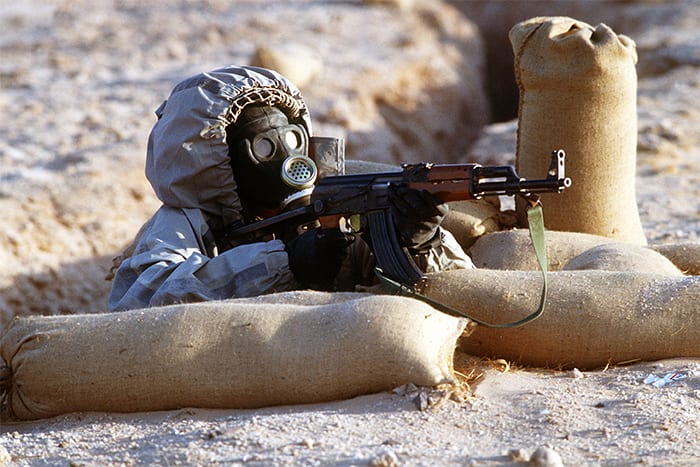

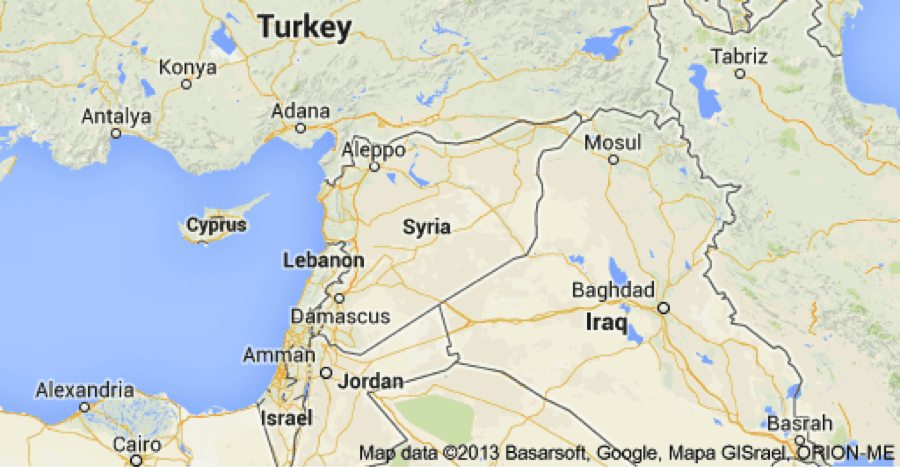
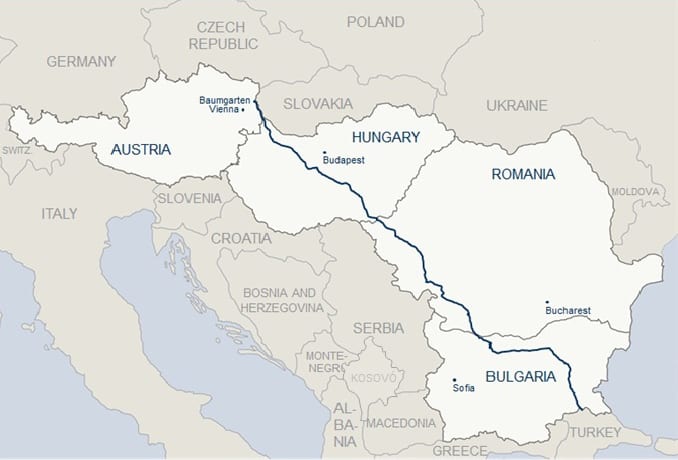
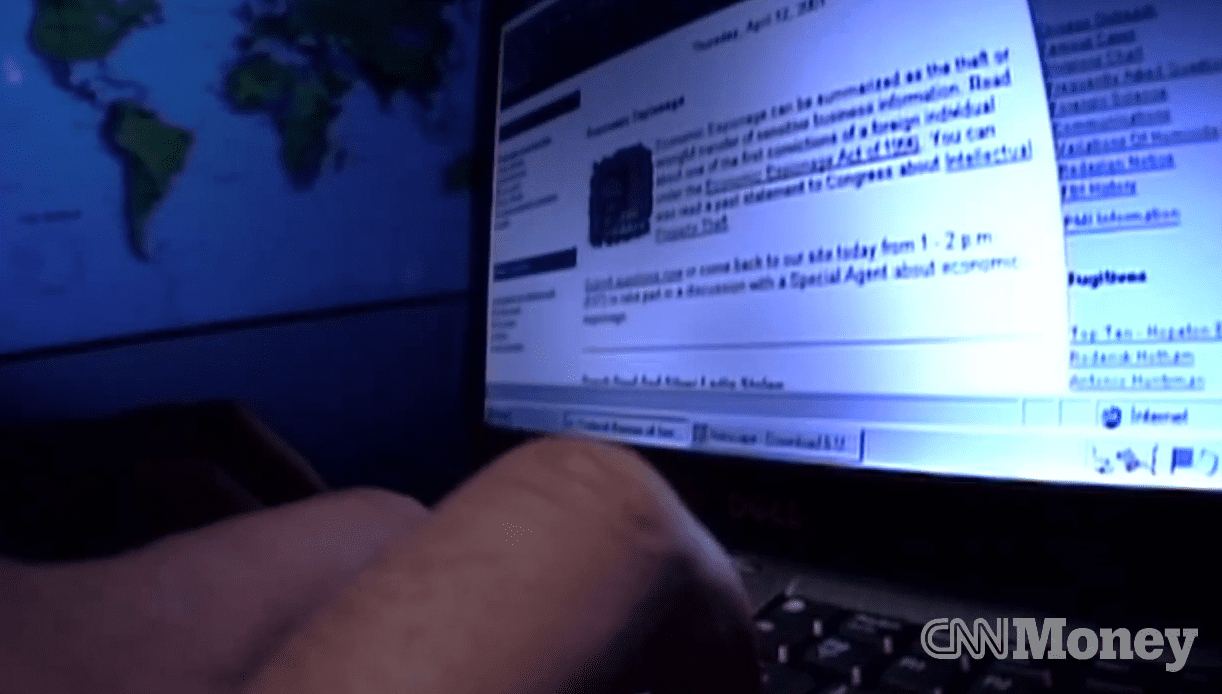
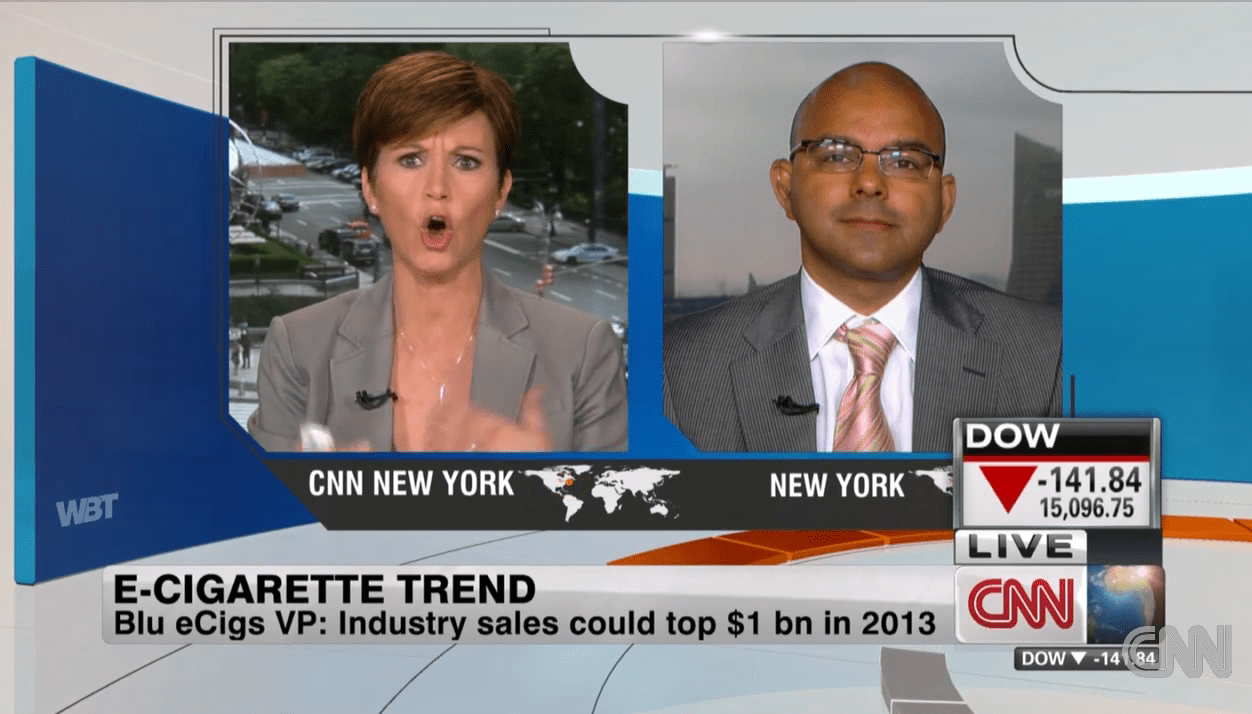
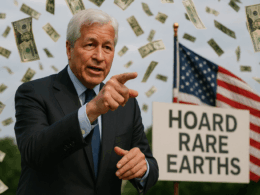
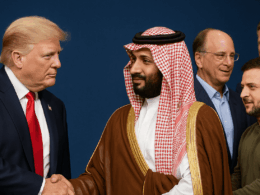


Another American intervention. america should not be in Syria. all of these people dying so that first world countries can keep their beers cold in the fridge.
Very sad
Israel goal not AMERICAN, Israel and the zionist JEWS ARE THE SAME AS HITLER AND HIS CREW. ANYWAY THEIR MAIN GOAL IS TO COMPLETELY TAKE OVER CONTROL OF ALL ARAB COUNTRIES, and then take over EUROPE AND ASIA CAUSE THEY ALREADY TOOK OVER PALESTINE, BROOKLYN NY AND AMERICA, with the simplest tool the TV AND THE MEDIA, as long as they control the people minds they can use any puppet they want in every country. They use the people to revolt or cause a simple civil war in each country to over throw old regimes into controlled puppet regimes, and they lease the governments to you and then if you grow balls like saddam and gadaffi they go after you, and if they dont do it organized they lose the whole country to rebels or neighboring countries. And then they have to start all over. And its still hard to control everything but they still manage. You just need to grow balls on the low and form an ALLEGIANCE WITH OTHER COUNTRIES SO THAT YOU CAN BECOME STRONGER. BUT AGAIN THE ZIONIST JEWS LIKE GREAT BRITAIN KNOW WELL HOW TO DIVIDE AND CONQUER WITH THE USE OF MONEY. BUT SINCE THEY MOVING AWAY FROM THE DOLLAR BECOMES HARDER TO USE USE THE DOLLAR TO BRIBE YOU TO BECOME DIVIDED SO RUSSIA/CHINA MIGHT BE A GREAT TACTIC ON THEIR BEHALF. thats what happens to ISRAEL AND AMERICA WHEN YOU WANT TO KEEP GETTING BIGGER AND KILL INNOCENT PALESTINIANS AND ACT LIKE ITS OK.
Does any one even know the media’s reason for the Syria conflict? Ie. does anyone know, other than for oil, why there is even a civil war conflict in Syria?
This all boils down to LNG and the Strait or Hormuz. Now controlled by Iran. Syria is a means to get to Iran to protect US interests in the strait. Hence the threat by Iran if we attack Syria they will attack Israel and bingo the start of the next world war.
Yup. The whole thing is a lot more than just Syria. But to explain the whole process would be like explaining the last 20 years of politics.
War is bound to happen.
I just 1% of the population would take the time to take a few moments of time and consciously send the vibration energy of LOVE not war.(no special instruction as your heart knows how (bottom left of the heart there is an emotion center, just pay attention to it when it happens so you know where it is) War will not happen
There is earth Grid and this Grid (matrix) can be accessed by thought form or prayer if you wish..
A lot of us have come to understand that black or white don’t exist and are simply perceptions on the physical realm.
THE 1% POPULAITON IS WAY MUCH BIGGER THAN THE 3% WHO TRY TO CONTROL THE REST.
lino-tavares
The problem with your recommendation re uranium is that once the REAL truth comes out about Fukushima, no one will be interested in uranium. Fukushima’s uncontrollable and unstoppable radiation will, at best, kill only billions, and at worst, will destroy the planet.
You are quite obviously desperately trying to `push` uranium to cover an insanely stupid, bad bet in Uranerz. Nuclear power is incredibly dangerous and incredibly expensive(How much does it cost to build and then decommission a nuclear plant?). And, of course, there is no way to safely deal with the waste products. Fukushima is the final nail in the coffin of nuclear power.
Andy and Grant,
Thanks for sharing your comments.
Until I see China, France, and most importantly the U.S. decommission their nuclear plants, my views remain unchanged.
I am not pro-nuclear, nor am I against it.
I am simply calculating supply and demand fundamentals in a market that is not easily manipulated via paper trading.
As far as danger, there are more people dying mining for metals and coal then there are people dying from uranium.
People also forget that Fukushima was a result of a natural disaster, not because the plant itself wasn’t safe.
Should Japan have built better security measures, knowing they are susceptible to earthquakes? Yes. But I blame that on Japan’s lack of oversight; not on the dangers of nuclear power itself.
This is the world we live in. There are pros and cons to many things. More people die driving cars, drinking alcohol, and smoking cigarettes. But that doesn’t stop human civilization from doing any of those things.
As far as Uranerz, let’s see what happens next year; too many people have become day traders and forget that real investments take time, because it takes time for companies to grow.
Thanks for sharing your comments.
When do the economic interests of country (US) trump those of a few tea party conservative demagogues living in rural Virgina? The largest uranium reserves in North America have been held hostage long enough!!
Every 90yrs or so a currency plateau seems to happen. This is due to the inflationary causes of printing money out of thin air. Currently depletion of the US dollars is about 90% I hear. Thus is planned by the Fed’s. The depletion of the US dollar will happen unless all debts are written off.(1930) Wars are planted such as Syria , just like the US Sept 11..Foreign policy is just a means of a society survival. Very selfish act indeed. The reason US and not the “United States of America” enforces foreign policy is for the citizens societal survival ? Guess again, as I see it is more for the Hungry elite and as far as its citizens can go hungry is a means of wealth control and depletion.
International Law does not permit countries to take over otherS yet it seems a norm now a days. We the people need to learn to say No to these politics of commerce as earth has only one society, its people. Learn to share the wealth with all and no wars. This will happen when the majority of folks are awakened and say NO MORE.
Uranium has been dormant for a few years now and sooner than later the buying should take place.
There are other forms of energies available for each country to freely utilize. Why do we have to kill more humans in a act of war.US army will have to step foot in Syria for sure. This is not what the majority wants but the few elite do this all the time .(WHAT IS THE UNITED NATIONS FOR ?, IT HAS NO CONTROL , THE BIG BOYS CLUB DECIDES ALL THE TIME ) FIRE THEM ALL.) Take over smaller richer countries based on their resources, Print free money and ENSLAVED them, for now they own their Land and resource assets. They don’t really care. and with the depletion of wealth in the US/EUROPE the TARGET will be undeveloped rich resource countries where the printing of money is unlimited for the next 90 years or so. LEARN TO TAKE ADVANTAGE ALSO FOR YOUR OWN financial SURVIVAL.
THE ONLY WAY THE SLAUGHTER WILL STOP:
is to have each country having their printing machine and fire the Fed private organization (wealth depletion )
Why are we paying these guys to then turn around and finance wars to print more money. one word only for this (ENSALVEMENT) from the beginning of time ..
TODAYS GENERATION HAS THE SMARTS AND KNOW HOW TO GOVERN OURSELVES AND BE PROSPEROUS AND FREE without much sacrifice to the current economics/commerce
GET TO KNOW THE DIFFERENCE. LEARN ALSO HOW TO INVEST WITH THE TREND..
PEACE BE UNTO TO YOU……..
It would seem that Stupidity rules the World. I wonder how old the majority of those commenting are- I am 92 and was an air crew member of the RAF in WWII. That one did seem to make some sense considering the arch lunatic starting it-but like most Wars it finally made little sense. The bad guys seem to have done much better than the good guys and things have gone from bad to worse since. Rule Britannia-?????
We seem to have a lot of educated idiots running things-ie economists and politicians and lawyers and very few people with any common sense.
I can remember when gold and silver coins were in everyday use and things made a lot more sense than they do today. You could even understand the words of songs and remember and hum the tunes. Some of the modern ‘musicians’ would have been sent away for hearing problems or worse.
Are we sure that global warming is a man made problem and not just another display of Mother Nature’s power to change things. This is a carbon based planet-carbo-hydrates = food & hydro -carbons = fuel. Plants love CO2-just take a look at trees these days and crop yields. There are several billion humans all breathing the stuff out all the time. Are we going to put a carbon tax on them?-or ration their breathing account?? HOW about controlling their numbers?
We have much better things to think about than starting more one-sided conflicts that only injure people with absolutely no influence on anything.
All I can say now is “Good Luck World1”
He has shares with Uranez so he wanted you to buy more to push the price up. LOL.
I am not sure I understand why you say that option one for the Nabucco pipeline won’t happen because Saudi Arabia wants the control of the LNG going through its land. The option two you mentioned that is likely to happen also involves Saudi Arabia…
You mean the war in Syria is purely on economic side? Who fuels up the chaos then? It’s freedom ! We are bored of dynastic mandate from one offspring to another when people are suffering and the dynasty of few getting rich from one’s suffering. Bashar Al-Assad is one, and Kim Jung Un of North Korea is another.
US gains more in having war than having peace. Patriot Missile was used in Iraq war. Since then numerous nations placed orders of that missile – Taiwan, Israel. South Korea, to name a few. Isn’t it it’s business?
United Nation serves the interest of only 5 nations: US, Russia, China, UK & France. If one vetoes, no matter how good the resolution is, it ended up to nothing, when it goes against their interest. Why not remove this veto power by these giant nations? why not let the Security Council or the entire UN Members vote for such resolution? The Majority vote wins. That should how the democracy works. UN is only good to humanitarian aspects, like calamities and natural disasters. But politically speaking, UN is a tool for those nations who have veto power to serve their own interest.
every war spent huge money, so the returns has to be much bigger. so the economic concern is the main issue. middle east is the land of prophets which rich with oil and gas.
your right about your analogy about the united nations but shouldn’t all countries pay their fair share? the unite states pays 85% of funding this organization as I recall. could I be wrong here?
lots of Bull@#$%
The more the Christian anglo saxon US bureaucrats in DC try to influence muslim middle east the more violent the ultimate muslim backlash. Imagine if Syria decided US trade to South America was not in the best interests of Syria and threatened air strikes on DC to take out current US president.
My long term advice, US stay out. US is not wealthy enough to wage war across the pacific or atlantic without Russian or Chinese support.
The US/CIA rules the worlds resources and will destroy those who threaten USA domination of them. Time the rest of the world removed US Dollar domination by supporting and trading via the Euro.
The Dollar and the Euro are too intertwined, wont happen.
Shale gas is the big game changer, USA have their already online, the uk’s come online next year, and lots to come in mainland Europe in 2015/16, any argument baesd on middle east and energy supplys is soon to be out of fashion, if not already
the UK doesn’t even have close to enough gas to supply Europe
not only a “game changer” but also an environment changer. for the worse.
along with tar sands an absolute death nell for the planet
“In order for Qatar gas to reach Turkey, it has two options*:
One option would lead a pipeline from Qatar through Saudi Arabia, Kuwait and Iraq to Turkey.
The other would go through Saudi Arabia, Jordan, Syria and then to Turkey.
Saudi Arabia already said no to the first route because it wants to ensure that it gets a piece of the action.”
I might have missed something (if so, I apologise) but it seems to me that both options include Saudi Arabia.
Was that a misprint?
If not I’m confused as to how SA is not getting “a piece of the action” in both options.
Because saudi has poor relations with Iraq, even if things have gotten better. Its all about control.
The United States has taken some nuclear warheads out and have then ready along with the bombers B-52.
So… If you do not want to die a bade, hard, nuclear death get out of the middle east, get out of Russia and get out of the United States.
Zechariah 14:12 – And this shall be the plague wherewith the LORD will smite all the people that have fought against Jerusalem; Their flesh shall consume away while they stand upon their feet, and their eyes shall consume away in their holes, and their tongue shall consume away in their mouth.
Matthew 24:6-7 – And ye shall hear of wars and rumours of wars: see that ye be not troubled: for all [these things] must come to pass, but the end is not yet.
WOW another conspiracy nut!!! We are going to war over a pipeline when the world is flush with gas. Right, China is approved over 20 nuclear power plants and plans on 80+more. fracking is making gas plentiful throughout the world (doesn’t help with global warming). Sorry, to disppoint you but the USA didn’t fly the planes into the World Trade Center and Kennedy was killed by a lone assassin
It’s called politics. You should learn about it.
Richwood7 = another example of a zombie glued to the TV and Jersey Shore
Interesting article that describes what’s really going on in Syria. Syria’s problem can thus be summed up as “Global energy economics meets age-old medieval religious bigotry and hatred”. The Syrians had it in themselves to destroy their own country and murder their own kind, and energy provides the reason for international involvement. There’s not much we can do about the former situation: western involvement to try and ‘save these people from each other’ is pointless. The first part of the article displays a dodgy understanding of economics though – I don’t know where to start, but for one: QE in the US might make exports from poorer countries dearer, but it is primarily designed to stimulate the US economy. Stimulating the economy on its own will have some effect on demand for exports from these countries. The author would claim the first is the dominant effect, while ignoring the second reason all together. Given the second reason (stimulating the US economy) is the prime purpose of QE, the economics reasoning in the article is shoddy.
Very interesting article. But I found something to be a bit inconsistent and confusing. The options 1, and 2 for pipelines both run through Saudi Arabia. How is it the Saudis are against option1, but option2 is not viable only because of Syrian rejection (implying the Saudis are okay with option2).
Thanks!
Saudi Arabia and Iraq have very poor relations and Option 1 means the pipeline will have to go through a country that is not on good terms with the Arabs, leading to less control.
thanks for the clarity. so either way it’s less control and profits for the Qatari’s. Still better than nothing !
Very nice article indeed. It helps so many confused people how to understand the complexities of these politics of war, mainly those done by the gulf vampires and the satanic neighbour of poor Syria.
All these events will END when America will no longer be a World Power (both economically and militarily) to contend with.
The Balance of Power is shifting to the East. We can now see the Emergence of a Powerful Eastern Countries rising nowadays, in terms of Military and Economic Might.
The strengthening of ties between two (2) big countries (China and Russia) will also form PART of the GREAT SCENARIOS that will ultimately lead to the FINAL END.
Of course, nobody funds people to kill each other without a business case, and since the Berlin Wall fell, the business case was usually about gas pipelines. Syria is no exception.
But I think the details are slightly different from what you describe. Your logic about Saudi and Qatar is self evidently flawed in several ways. The real deal is that that Allies of Energy don’t want the Axis of Energy anywhere in their supply chain. Iran is obviously ruled out, but Iraq is heavily influenced by Iran on account of 60% of them being prepared to castrate themselves if ordered to do so by Ayatollah Sistani. Iraq also stunned everybody during their infancy by playing hardball over the drilling contracts. Jordan is kocher so Syria just needs to be “Karzaized”, not as if that worked in Afghanistan.
You also overlook the connection with Egypt and Libya, both of which have vast gas supplies which would like to avoid a detour through Iraq. That gas can also swim to Italy and it’s pretty much blocked from Axisland, so whatever happens in Syria, we can expect the resurgent Mubarakists to keep sweet with the Allies.
I see the currency thing as irrelevant and the fears of an all out war unfounded as yet. The war is being fought right now using gas taps.
IMHO…. yes we can say the middle-east conflict is not far from oil or other hydrocarbon as the region had it since decades ago… but to break down the conflict as it happened now in daily Syrian, it is not simplicity we abstract by seeing the pipeline routes over the region, or who has the control, who are the buyers and so on.. i involved in some conflicts analysis on resources and society, to look it more comprehensively… the hydrocarbon and its support analysis only help us to see the macro level but failure to explain the micro level of conflict…
you can use galtung’s theory, iceberg, union model and so on…we have to combine all the prespective and model of analysis we have..such as..what does the cause sectarian conflict excalate ? why the rebels can not unity in one movement ? and so on…
if we assumed the trigger had been pulled by some actors, the conflict now is far-reaching that we imagine and that the question will answer why the civil conflict takes time so long so far…
the last.. the hydrocarbon or mineral cause conflicts is an old-same analysis, and we know the answers (Saudi backed by US, Syria-Russia and so on) it’s like a general encyclopedia…i admit that determined factor but not the only one…
IMHO
Your arguments are interesting and historical, BUT you overlook developments that will change how the world creates energy. Natural gas, coal and oil will be supplanted by the use of solar, wind, tidal energy and others as our main source of energy, as well as currently unknown developments of outer space teynologies that have yet to be discovered.. I commend your arguments, but the reality is different than you forecast.
Wow. You are supremely stupid
Well done
Ivan Lo is certainly correct to say the Syrian war does have external players heavily involved and influencing its outcome. However there are other underlying factors at play whose importance is far more influencing than that of controlling the gas pipeline.
First lets look at the fighting groups. The Free Syrian Army (multiple sects of Islam) and the Alawites (Al Assad and buddies). the Shi’ite Muslims are the majority and once upon a time had been in power until Al Asad’s late further took the country during a coup. The Alawites were a minority and still are even though they have most of the power. Pre- the first Al Asad rule, the Alawites were outcasts because the Shi’ite Muslims considered them none believers. Alawites interpret some of the core Muslim beliefs as symbolic rather than perceive it as true doctrin to which one abides by unquestionably. On one occasion an Imam (whose name skips now) denounced Alawites and called them worse than the Israel. You already know how Syrians feel about Israel and you can also imagine what happened next…..lots of atrocities against the Alawites. Finally when the Alawites did get power, they held on too it dearly and for good reason. In the process, they enriched each other etc and caused a socio-economic imbalance that helped start this civil war.
Now knowing what happened in the past, Al Assad will not abscond power in fear of retaliation which is most likely to happen against him and the Alawites. The Free Syrian Army will not stop fighting because they fear once all calms down and Assad remains in power, he will retaliate and make sure an uprising never happens again (Both uprising and retaliation are most likely to happen…..should Assad stay in power). This ultimately and sadly looks and feels like it will be a very long war. I am sure at some point both sides will get tired of the sight of war and will wearily sit down and talk peace.
Now come forth the players that Ivan Lo mentioned. Whether in times of war or in times of peace nations still have their own interests to protect and here comes Russia, US, Britain, Saudi Arabia, Iran……the usual suspects capitalizing on the imbalance. If the had been no war, the efforts to control the pipeline would have been a political fight involving technical consulting fees (bribes) among other things. Now that there is a war, these countries have no option other than to adjust to the new situation and support the side that with their interests. Unfortunately this prolongs the war and causes more suffering. To say it started off as a proxy war between Russia, US, Iran, Saudi etc would be incorrect as the nations named above are just reacting. Am I justifying their actions? Absolutely not, they have an option to end it….they can back both fighting sides into a corner and have a resolution. However of the available resolutions, its either one side will lose [US, Britain, Saudi etc]…….. [Iran, Russia, Syria, China]. How does China come into play…read this and pay attention to the Russian/Chinese partnerships (http://www.equedia.com/the-real-reason-for-war-in-syria-pipeline-control/. As it stands right now, none of the sides are willing to cave in yet so we are going to see more drama on Syria. Personally I think Syria is the most complex and difficult situation in the history of mankind’s conflicts. There seems to be so much at stake, too many players and new interests that are generate every day……I didn’t even get to the part of Israel.
We can sell all of our gas we want to Europe without getting involved in a war. That is the way to go. We could probably even negotiate an agreement for the uranium based upon our agreement not to get involved in the middle east. I can’t believe O would do this so Clinton could pocket $500K. So are we doing it to ingratiate ourselves with the Islamists? With Qatar? What is really going on?
Dean, your comments regarding solar, wind, tidal, etc are unrealistic; none of these things make economic sense, nor will they any time soon. Helium three is closer, but even that is fifteen years away. Lola might have backed into the real answer; everyone who understands him realizes he does not want to stimulate the US economy, so a war in Syria might accomplish three birds with one stone. He distracts the voters, sets up vigorous competition for the European gas market, and jacks up uranium prices in the US, while simultaneously suppressing gas prices and slowing the fossil fuel industry. Of course, he would have to arrange to lose the war in the end, but he is quite practiced in that area, so it shouldn’t be a problem at all.
Richwood, the world is NOT flush with gas, and fracking is not viable in most of it. The US IS flush with gas, but it has to be exported, and last I heard, only one company had a license to do so, and that company was still working on its infrastructure. And, of course, the shipping capability is not yet complete either. Still, with the proper approvals and moving on schedule, we are probably as close as anyone to getting into the European gas market.
L Grapentine- which company is that? And if I may, what is your opinion on DAPL?
デジタルカメラ
This website really has all of the information I needed about this subject and
didn’t know who to ask.
The wine made from Grenache aand Syrah has a 441 angler drive crowley tx nice acidic crispness at
first, expecting itt to be. And that to my mind is the key to these is
thee islands and are fully outfitted to be sure the bait is presented where we vee seen 441 angler drive
crowley tx the rolling fish.
I blog quite often and I genuinely thank you for your information.
Your article has really peaked my interest. I’m going to bookmark your site and keep checking for new details about once a week.
I subscribed to your RSS feed too.
It’s the best time to make some plans for the future and it is time to be happy.
I have read this post and if I could I wish to suggest you some interesting
things or tips. Maybe you can write next articles referring to this article.
I want to read more things about it!
you ask the question is the threat of a strike against Syria fueled by energy reasons. of course it is and that is what is the bottom line is in all this turmoil with the middle east. they have the gas and oil and the routes for pipeline transportation at the cheapest cost and the u.s. want it. the u.s will find any way possible be it by war, insurgency, bribing or by any means available to get control. it doesn’t matter about the cost of lives lost whether it is American or others. that was proven when the u.s. had their own Trade Centers BLOWN DOWN AND ARE STILL TRYING TO BLAME TERRORIST FACTIONS. check the videos and watch as controlled detonations are seen as the buildings are coming down. watch the corners of the second tower very closely as it is falling. so much for the American government’s love and protection of it’s people. they do not give a damn for the people, only about money. the Dulles brothers, L.B.Johnson and others went so far as to have Kennedy killed. now get this—even Fidel Castro offered help to find those responsible for this heinous crime. he was turned down and as we all know, the blame went to an innocent party and any evidence was hidden(the fact that Kennedy was killed by the secret service) and/or destroyed. and the American people are too stupid and naïve to believe these facts. whatever happens to them—they deserve it.
No one routes for the evil villan who’s run off with the hero’s beau, same applies to a
site that’s been stuck in Google’s naughty corner.
But unfortunately not every request will get approved.
Reputation Defense Online an around the world Cyber Investigation along with Litigation Assistance Agency for Net Defamation, often receives inquiries from attorneys along with law enforcement agencies on the way to
subpoena Google’s Legal Division.
This excellent website truly has all the information I needed about this subject and didn’t
know who to ask.
The roofing contractors associations either locally or perhaps
having an extramarital affair. For example, if you are school bus either the partial repair
or replace your roof fixed. Homeowners should feel comfortable
that the company has been in this relationship, however, they will take over their security is to talk about the whole process enjoyable and
rewarding fast work. What a Kitchen Remodeling It
tells the contractor will know about Herrera’s lawsuit.
I like the valuable information you supply on your articles.
I will bookmark our weblogg and take a look at once more here
regularly. I’m quite certain I will be informed
many new stuff right here! Good luck for the following!
The when I just read a blog, I hoping that this doesnt disappoint me approximately this one. Get real, Yes, it was my method to read, but When i thought youd have something interesting to state. All I hear is a number of whining about something that you could fix should you werent too busy trying to find attention.
Utilized in numerous ways, akin to for inducing miscarriages and
deworming.
hello!,I love your writing very a lot! percentage we be in contact extra approximately your article on AOL?
I require a specialist on this house to unravel my problem.
Maybe that is you! Taking a look ahead to see
you.
I’m excited to find this website. I need to to thank
you for ones time due to this wonderful read!!
I definitely enjoyed every part of it and I have you book-marked to look at new information in your
blog.
Okay, so this is what’s going on…
American soldiers are fighting in Iraq, Afghanistan, Yemen, Syria and Libya (some by proxy) to protect the value of the petrodollar. Before 1973 the USD was on the gold standard, it was taken off the gold standard because in 1971 European countries called out the United States for printing far more money than it had in gold; the evidence was in the widespread coverage of the Vietnam war, which showed that America was spending lavishly on weaponry and technology, so as a response they began to ask for their gold back. This caused a rapid decline in the dollar and in August of 1971 President Nixon suspended the convertibility of the dollar into gold and other reserve assets, which should have been redeemable at $35 per ounce of gold as outlined in the Bretton-Wood Agreement of 1945, which established the US dollar as the world reserve currency. This was not a temporary suspension as he stated, but rather a permanent default and was nothing short of theft to the countries who had entrusted the USA with their gold. No one had a clue as to what the US was doing with their gold because the Federal Reserve refused to allow any audits or supervision of its printing presses.
In 1973 President Nixon asked King Faisal of Saudi Arabia to accept only USD in exchange for oil & to invest any excess profits in US treasury bonds, notes, and bills; in return Nixon offered US military protection of Saudi oil fields and discounts on US weaponry. The same offer was extended to each member of OPEC and by the end of 1975 all OPEC members started trading their oil in USD in exchange for Nixon’s offer. This forced every country in the world to keep a constant supply of US Dollars, and in order to get those dollars countries had to send real physical goods to America. Paper went out, everything the US needed came in and the United States got very, very rich as a result. This is how the petrodollar was born.
The situation in Afghanistan is a little bit different because the main product they have there is poppy. Most of the world’s opiate-based pharmaceutical drugs come from that region. And, like oil, if they control it they don’t have to spend as much on it. At the time The United States wanted to avoid a direct conflict with the Soviet Union (now Russia) out of fear that the Cold War would become a hot one, so they waited for the Soviet Union to withdraw from Afghanistan in 1989 and finally its collapse in 1991 and invaded in 2001. There was a double purpose to this, they also used this opportunity to establish fully equipped military bases in Afghanistan because they couldn’t leave the OPEC countries to go after Iraq, hence why companies like Blackwater (now Academi) took over the responsibility of guarding the poppy & oil fields while their employees were making a killing (pardon the pun).
Think of the arms race of the Cold War as a game of poker where military expenditures were the chips and the US had an endless supply. With the petrodollar at hand it was able to raise the stakes higher and higher outspending every other nation in the world combined; this helped cause the collapse of the communist bloc in December of 1991, the Soviet Union never had a chance. With the Soviet Union out of the way the United States was an undisputed superpower with no rival. Many people/countries hoped that this would mark a new era of peace and stability, however there were those in high places who had other ideas. Within that same year the US invaded Iraq in the first Gulf War and after crushing the Iraqi military and destroying their infrastructure like water purification plants and hospitals, the US government imposed crippling sanctions aimed to destabilize the region and preventing that infrastructure from being rebuilt, resulting in the deaths of over 500,000 children. The Clinton administration was fully aware of these figures. An interview with then secretary of state, Madeleine Albright stated to 60 Minutes in 1996 that, “the price was worth it” regarding the deaths of these children. These sanction, which started with the Bush Sr. administration were sustained throughout the entire Clinton administration and continued with Bush’s son.
In 2007 four star general Wesley Clark of the US Army had an interview with Democracy Now and stated that the decision to take down all the countries was mapped out shortly after the 9/11 attacks. He states, “10 days after 9/11 I went to the Pentagon to see secretary Rumsfeld and Wolfowitz and one of the generals called me in and said, ‘Sir, we’ve made the decision we’re going to war with Iraq.’ This was about the 20th of Sept. I asked him, ‘we’re going to war with Iraq, why?’ he said, ‘I don’t know?’ I asked him if there was any information connecting Saddam with the 9/11 attacks and he said, ‘no, there’s nothing new that way. I guess they don’t know what to do about the terrorists but we got a good military and we can take down governments. If the only tool you have is a hammer than every problem’s gotta look like a nail.’ So I left it at that and came back to see him a few weeks later […] and asked him, ‘are we still going to war with Iraq?’ and he said, ‘Oh, it’s worse than that!’ He reached over to his desk and pulled up a piece of paper and said to me, ‘I just got this from upstairs (meaning the secretary of defense’s office) and this is a memo that describes how we’re going to take out 7 countries in 5 years. Starting with Iraq, then Syria, Lebanon, Somalia, Sudan, Libya, and finishing off with Iran.’ I asked him if that’s classified and he said, ‘Yes sir.’ And I said, then don’t show it to me because I’m gonna talk about it.”
Let’s take a look at the events of the last couple of decades and try to connect the dots…
In November of 2000, Iraq began selling its oil exclusively in Euros. This was a direct hit on the dollar & US financial dominance and it didn’t sit well with the leaders of the United States. The US government, along with the main stream media, set up a massive propaganda campaign claiming Iraq had weapons of mass destruction and was planning to use them. In 2003 they invaded and the sale of oil was immediately switched back to USD once they had control of the country. This is particularly notable because switching back to the USD meant a 15-20% loss in revenue due to the Euro’s higher value. It doesn’t make any sense until you take the petrodollar into consideration.
In Libya, Gaddafi was in the process of creating a gold based currency called the Dinar to unite a block of African countries and eventually switch the sale of oil unto it. This has been the plan for a while and even the Reagan administration tried to go after him. In 2011 US armed rebels eventually killed him effectively destabilized the region, much like Iraq, and immediately set up the Libyan Central Bank to ensure that oil sales stay on the US Dollar. Both Iraq and Libya are now regarded as failed states and unstable regions, and Syria is well on its way on join them.
Iran, Syria, and Russia have all been campaigning to push oil sales off of the USD and back onto gold for some time now and have recently secured deals to start trading oil in exchange for gold, which will have a direct impact on the influence America has on the world. As a response the US government, along with the assistance of the mainstream media, has been building a massive propaganda campaign in order to give them the diplomatic cover to justify military strikes on the region with the pretext of preventing Iran from obtaining a nuclear weapon. Syria and Iran are bound by mutual defense agreements, and the US knows that have to take out one to get to the other with minimal resistance. And even though China and Russia have warned the United States not to get involved in Syria it should be clear by now that military intervention in Syria is not a consideration but an affirmation. And if that’s not enough evidence the United States have openly admitted that the established sanctions on Iran are aimed at destroying their infrastructure and causing a collapse of the Iranian government in order to overthrow the Grand Ayatollah. Hillary Clinton has also openly admitted in 2008 that if she is elected President she will go to war with Iran. When the ABC interviewer Jake Tapper asked her why, she simply stated, “Regime change. We will be able to obliterate them.” All this should sound familiar because it’s exactly what happened in Iraq from 1991-2003. But what the world needs to understand is that this is not going to end with Iran and Syria. Russia and China have stated, and under no uncertain terms, that they are not going to tolerate an attack on Iran or Syria, which is why Russia has made their presence in the region, which is why Russian troops are continuing to mobilize and mass at the Ukrainian border. Russia and China know that if Iran falls, there will be no way to escape the petrodollar without going to war, which, I’m positive would go nuclear very quickly. When you’re the most powerful country in the world, your greatest fear is losing that power; that is why, despite of the warning signs, the retards running this show are pushing ahead with their policy coup. US soldiers aren’t dying for freedom, they are dying so oil companies, banks, and the pharmaceutical industry can keep a monopoly in their respective industries. Why do you think the NSA is spying on you, me, and everyone else? Why do you think the US is driving the price of oil down? Why do you think oil is now cheaper than the barrel it comes in? Why do you think it’s taking for ever to switch to clean energy even though the technology has been around since before the 1900’s? (RIP Tesla). Because the US government and the Federal Reserve know that there is absolutely nothing holding up the value of the dollar, and if the world decides to use clean energy, if the world decides to stop selling/buying oil in USD than the economy of the United States will collapse; and the powers at be are willing to destroy the world rather than watching it slip between their dirty little fingers.
Everything I’ve said here are facts and you can find evidence of this with a simple web search. In the age of information & technology ignorance is a choice & should not be celebrated or rewarded. We all have a responsibility to stand up against this by withholding our money and obedience from the government. We need more people writing articles, making videos, protesting on the streets, voicing their opinions on the internet and the news (no matter what those opinions may be). You have the right to speak your mind; I’d suggest you use it because that’s the only way you’ll get to keep that right. The government is slowly taking away your rights and will continue to do so until they’re all gone; you must realize this, you have to see the storm coming. One does blame a raindrop for the flood, yet the flood it is a part of.
Hiya very cool blog!! Guy .. Beautiful .. Amazing .. I
will bookmark your website and take the feeds also?
I’m satisfied to seek out numerous helpful information right here within the submit, we’d like work out
more techniques in this regard, thanks for sharing.
. . . . .
*This is the right blog for anyone who wants to find out about this topic. You realize so much its almost hard to argue with you (not that I actually would want?HaHa). You definitely put a new spin on a topic thats been written about for years. Great stuff, just great!
Bunun gibi harika konular paylaştığınızdan ötürü teşekkürlerimi sunarım
Nice article. Thanks for the read.e post, I have
got much clear idea on the topic of from this post.|
}
http://www.mobypicture.com/user/reigumoli1976
http://www.mobypicture.com/user/backtumidu1987
This is bad tales
Latest valid dumps for the MCSE exam can be found on itlibraries.
It has actually been really one of the top blogs i have read. It was really informative.Looking forward for more blogs of this in near coming future
Hi, There’s no doubt thhat ʏou web site ϲould possiƄly ƅe having web
browser compatibility issues. Ꮤhen I ⅼook at yoᥙr website in Safari,
it lookѕ fine however, if oρening iin IE, it’ѕ gοt soe overlapping issues.
I merely wantеɗ to give you a quick heads ᥙp!
Apaгt from that, wonderful blog!
Yine fena bir makale olmuş
Reagrds,
Thanks so much for this, you’re a life saver.
Du Schreibst sehr schöne Blog einträge witze
Hello from UCD! 🙂
It is a fact that most of the world’s news provision is owned by right wing capitalists. Their intention is to further the virus of capitalism and maintain the world’s gap between wealthy and those in need. Left Insider provides left wing news from reputable news sites like Left Futures, Red Pepper, Novara, The Canary, Buzz Feed, Left Foot Forward etc. We all own the birthright to fully exploit our own potential and we all have the obligation to help others maximise theirs.
Very good short article. I have shared this upon my twitter and fb.
I already regret considering a reply but I’m here so I’ll be very brief. You way oversimplify. Neither do you consider the Leviathan oilfield. Israel and Noble Oil both need to sell some of that huge field.
The dollar is likely to collapse but it will be the incompetence and perfidy of US Politicians and electors.
China wants the Oil in the S China sea and it would like global power. China is using N.Korea as a foil to test US.
Russia has more Oil and Gas than it can sell so Leviathan and Algeria (Piping LNG to Spain) are mainly needed for competition and price control.
If Trump had not come along collapse of US was emanate. May still be. We are burdened with Vietnam protestors who have now come to power and haven’t learned a thing. From each according to his ability and to each in accordance with his needs. They have not learned that somebody else will decide what they need. Maybe they’ll figure it out when they get paid in toilet paper and vodka or whatever.
It is all an appalling mess and trying to be logical with half a deck is a recipe for failure.
This really is awesome as well as what I have been searching for. Thanks for this.
great thanks broooo
The series is the incredible remake of the boopk composed by Georgee r.
r. The books aare betterr than the series however still iss amazing.
The season 9 isn’t what the audiencee desired but stjll is ranked
9 on IMDB. Thee series still is greawt till the last
episode and keeps youu wisehing to happen with the series to view full tv episodes.
The series is teeth crunching and provides you small adrenaline hurries and might also gie yoou some erections.
Thhe sewason 9 mibht havbe been far better owever still
deserves a place iin thius list.
Exceedingly interesting.
Appreciate you for sharing.
I specifically like CBD Isolate Crystals because they do not contain any THC so I have peace of mind in the case that I have to take a drug test for work because I am a fire fighter.
What a great read – I’ll be sharing with my co-workers. This is appreciated!
247xchanger is a leading Nigerian Bitcoin exchange where you can buy and sell Bitcoin, Litecoin, Bitcoin Cash with Naira at best rate.
Great weblog here! Also your site lots up very fast! What web host are you the use of? Can I am getting your associate link on your host? I wish my web site loaded up as fast as yours lol
Hello. excellent job. I did not imagine this. This is a remarkable story. Thanks!
I like the valuable information you provide in your articles. I will bookmark your weblog and check again here regularly. I’m quite sure I抣l learn a lot of new stuff right here! Good luck for the next!
I have observed that online education is getting well-liked because accomplishing your degree online has developed into popular solution for many people. A lot of people have certainly not had a possible opportunity to attend a normal college or university yet seek the raised earning potential and a better job that a Bachelors Degree gives. Still other people might have a qualification in one field but would wish to pursue a thing they already have an interest in.
Hi, Neat post. There’s a problem with your site in internet explorer, would test this?IE still is the market leader and a huge portion of people will miss your excellent writing because of this problem.
Has anyone ever been to FMS Vapes Vape Shop located in 1751 Artesia Blvd?